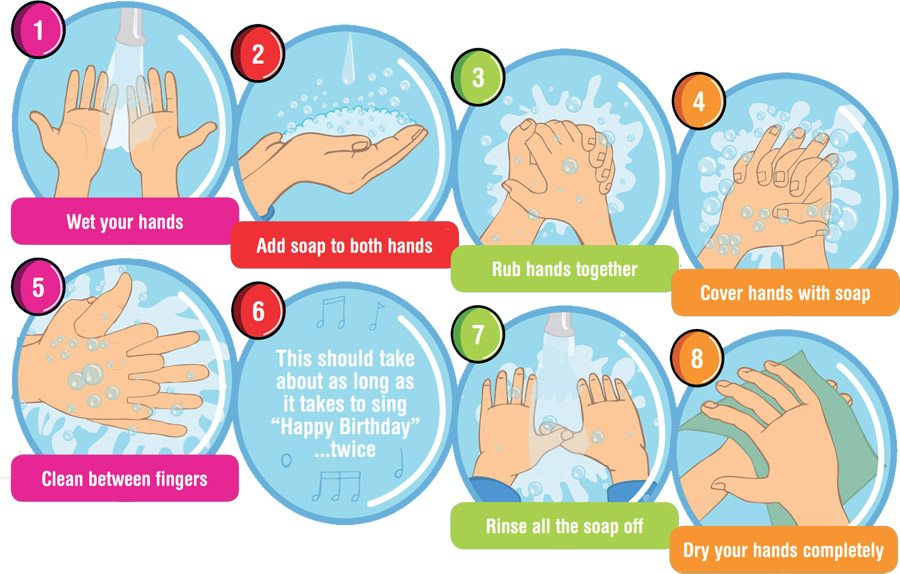As with all activities in the classroom, you should undertake an appropriate risk assessment to ensure food can be prepared and provided safely in the classroom. On a practical level, understanding and ensuring the basic principles of food and personal hygiene are observed during food preparation should avoid food poisoning occurring.
Wash your hands!
- Before preparing food
- After touching raw meat
- After touching the bin.

The basic principles of safe food preparation can be summarized as the “4C’s”:
Clean
- Worktops before preparing food and if they’ve been touched by raw meat, poultry or eggs.
- Wash utensils thoroughly.
Cook
- Make sure food is cooked thoroughly.
- To test if food has been properly cooked, check that it’s steaming hot all the way through. This means it’s hot enough for steam to come out.
- Cut open the food with a small knife so you can check that it’s steaming hot in the middle. Please note Chicken, pork, sausages and burgers should not be pink when cut into.
Chill
- To store cooked food, cool it as quickly as possible (ideally within one to two hours) and then store it in the fridge. Make sure your fridge is between 0°C and 5°C. Don't keep leftovers for longer than two days.
Cross Contamination
- Keep raw meat and unwashed vegetables separate from ready-to-eat food during storage and preparation don't let raw meat drip onto other food.
- Keep it in sealed containers at the bottom of your fridge.
- Never use the same chopping board for raw meat and ready-to-eat food without washing the board (and knife) thoroughly in between.
- Don’t wash meat before cooking it. Washing doesn't get rid of the harmful germs that can be present – only proper cooking will. You also run the risk of splashing germs onto worktops and utensils.
There is no legal requirement for teachers, staff, parents and volunteers who prepare and cook food in the classroom to attend a formal training course or to obtain a qualification in food safety. Some schools and local authorities may prefer their staff to have attended a formal training course. The necessary skills can also be obtained in other ways, such as through on the job training, self-study or prior experience.
Anyone undertaking food handling and preparation in the classroom should also seek information about any children with food allergies or food intolerances.
